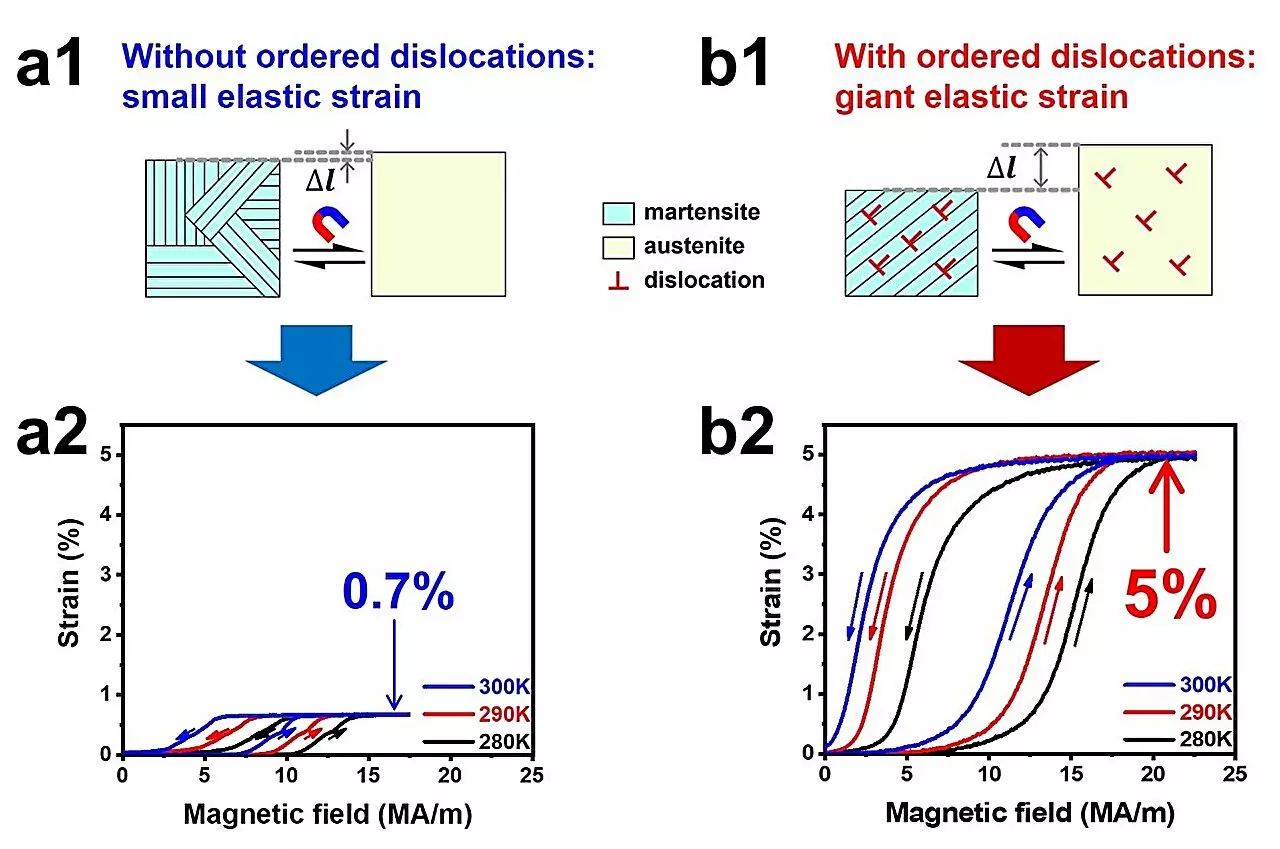A groundbreaking research study recently unveiled a remarkable development in the field of materials science – the achievement of a giant magneto-superelasticity of 5% in a Ni34Co8Cu8Mn36Ga14 single crystal. This remarkable feat was made possible by the introduction of arrays of ordered dislocations, which led to the formation of preferentially oriented martensitic variants during the magnetically induced reverse martensitic transformation.
Elasticity, defined as the ability of materials to return to their original shape after deformation, is a fundamental property of materials. While most metals typically exhibit a strain of 0.2%, shape memory and high entropy alloys can display superelasticity with strains of several percent, often triggered by external stresses. Magneto-superelasticity, induced by a magnetic field, holds immense potential for contactless material operation and the development of new large stroke actuators and efficient energy transducers.
The research team, in collaboration with the High Magnetic Field Laboratory at the Hefei Institutes of Physical Science of Chinese Academy of Sciences, spearheaded by Prof. Jiang Chengbao and Prof. Wang Jingmin from the School of Materials Science and Engineering at Beihang University, embarked on a journey to explore the possibilities of magneto-superelasticity. Through a stress-constrained transition cycling (SCTC) training for the Ni34Co8Cu8Mn36Ga14 single crystal, the researchers applied compressive stress to introduce ordered dislocations with specific orientations. These ordered dislocations played a pivotal role in influencing the formation of specific martensitic variants during the reversible transformation induced by a magnetic field.
Phase field simulations corroborated the significance of the internal stress generated by the organized dislocations in shaping the preferred martensitic variants. By harnessing the power of reversible martensitic transformation along with the preferential orientation of martensitic variants, the single crystal was able to achieve a remarkable 5% magneto-superelasticity.
Furthermore, a device utilizing a pulsed magnetic field was designed utilizing this single crystal. With a pulse width of 10 ms, the device demonstrated a substantial stroke at room temperature, courtesy of the giant magneto-superelasticity. In terms of applications, the device exhibited a rapid response to an 8 ms pulse with a minimal delay of approximately 0.1 ms. Prof. Wang expressed, “Our work offers an enticing strategy for accessing high-performance functional materials through defect engineering.”
The discovery of giant magneto-superelasticity through the manipulation of ordered dislocations represents a significant advancement in material science. The possibilities unlocked by this research hold promise for the creation of innovative technologies and functional materials with enhanced performance capabilities.


Leave a Reply